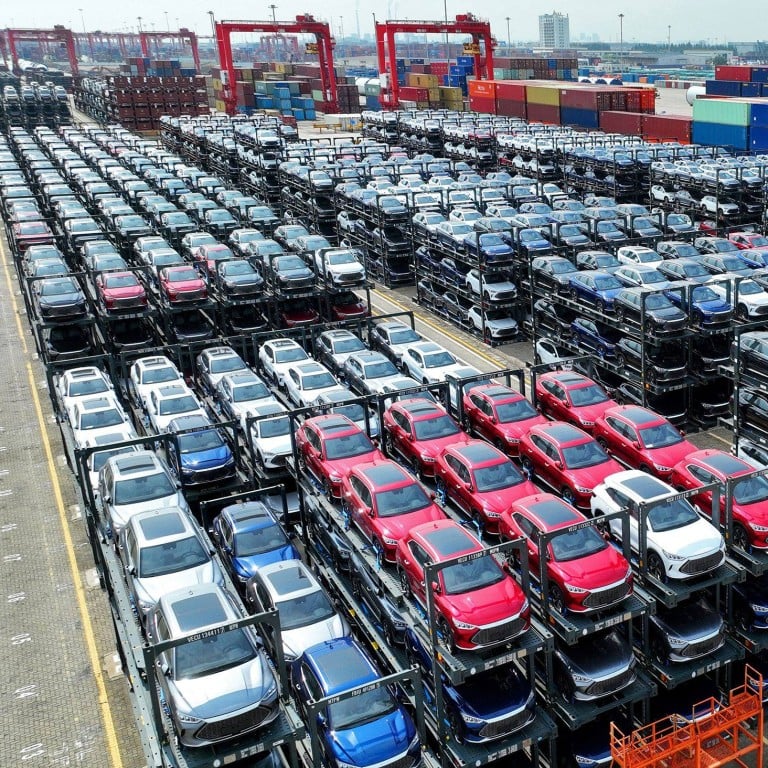Will Chinese Cars Dominate The Global Market?

Table of Contents
The Rise of Chinese Automakers: Factors Contributing to Success
Several key factors are driving the success of Chinese automakers in the global market. Their rapid ascent is fueled by a potent combination of technological advancements, strategic pricing, and significant government support.
Technological Advancements
Chinese automakers are making significant strides in electric vehicles (EVs), hybrid technology, and autonomous driving features. They are aggressively investing in research and development, often surpassing established players in specific areas. Companies like BYD, with its Blade Battery technology, and NIO, with its battery-swapping infrastructure, are prime examples of this innovative spirit.
- Advanced Battery Technology: Chinese companies are at the forefront of battery innovation, developing high-density, long-lasting batteries that power longer driving ranges and faster charging times.
- AI Integration: Many Chinese EVs boast sophisticated AI-powered driver-assistance systems and infotainment features, rivaling and often exceeding those found in Western vehicles.
- Autonomous Driving Capabilities: Significant investments are being made in autonomous driving technology, with several Chinese companies testing and deploying self-driving features in their vehicles.
- Partnerships with Tech Giants: Collaborations with leading technology companies are further accelerating technological advancements, integrating cutting-edge AI, connectivity, and software solutions into their vehicles.
Compared to established global players, Chinese manufacturers often offer more advanced features at a lower price point, disrupting the market and attracting environmentally conscious and tech-savvy consumers.
Competitive Pricing and Value Proposition
A key driver of Chinese car success is their competitive pricing. Lower manufacturing costs, efficient supply chains, and economies of scale allow them to offer vehicles with impressive features at significantly lower prices than comparable models from established brands. This compelling value proposition is attracting a large global customer base seeking affordable yet technologically advanced vehicles.
- High-value Features at Competitive Prices: Chinese automakers often include features like large touchscreens, advanced driver-assistance systems, and panoramic sunroofs, features usually found only in more expensive vehicles from other manufacturers.
- Cost-Effective Manufacturing: Efficient manufacturing processes and streamlined supply chains contribute to lower production costs, allowing them to undercut competitors on price.
- Focus on Value Engineering: Chinese manufacturers focus on delivering maximum value for the price, incorporating innovative technologies and desirable features without unnecessary premium pricing.
Government Support and Investment
The Chinese government plays a crucial role in supporting the growth of its automotive industry. Significant investments in infrastructure, research and development, and supportive policies are accelerating the adoption of electric vehicles and promoting technological advancements.
- Subsidies and Tax Incentives: Government subsidies and tax breaks for EV purchases stimulate consumer demand and make electric vehicles more affordable.
- Investment in Charging Infrastructure: Extensive investments in charging stations across the country are removing range anxiety, a major barrier to EV adoption.
- Research and Development Funding: Significant funding is allocated to research and development in areas such as battery technology, autonomous driving, and connected car technologies.
Challenges Facing Chinese Automakers in Global Domination
Despite their impressive progress, several challenges stand in the way of complete global market domination for Chinese automakers.
Brand Perception and Trust
Overcoming negative perceptions about the quality and reliability of Chinese cars in certain international markets remains a significant hurdle. Building trust and establishing strong brand recognition requires consistent quality control, robust after-sales service, and effective marketing campaigns.
- Building Brand Image: Chinese manufacturers are investing heavily in brand building, emphasizing quality, safety, and technological innovation.
- Addressing Quality Concerns: Continuous improvements in manufacturing processes and rigorous quality control are crucial to address past concerns about reliability.
- Targeted Marketing Campaigns: Strategic marketing campaigns are designed to build trust and change perceptions in key international markets.
Global Supply Chain and Logistics
Navigating the complexities of international supply chains and logistics presents a considerable challenge. Global trade regulations, tariffs, and potential disruptions can impact production and delivery timelines.
- Supply Chain Diversification: Chinese automakers are working to diversify their supply chains to mitigate risks associated with geopolitical instability and trade disputes.
- Logistics Optimization: Efficient logistics are critical to ensuring timely delivery of vehicles and parts to international markets.
- Managing Trade Regulations: Understanding and navigating complex international trade regulations and tariffs is vital for success in global markets.
Competition from Established Automakers
Established global automakers are not standing idly by. They are responding to the challenge from Chinese competitors with their own innovations, competitive pricing, and strategic alliances.
- Investment in EVs and Technologies: Established manufacturers are investing heavily in their own electric vehicle offerings and related technologies to remain competitive.
- Aggressive Pricing Strategies: Established brands are adapting their pricing strategies to compete more effectively with Chinese automakers.
- Strategic Partnerships and Acquisitions: Strategic partnerships and acquisitions are being used to consolidate market share and accelerate technological development.
Conclusion
The rise of Chinese car manufacturers is undeniable. Their technological advancements, competitive pricing, and strong government support have propelled them onto the world stage, significantly impacting the global automotive landscape. While challenges remain in brand perception, supply chain management, and intense competition from established players, the potential for Chinese cars to significantly influence, and potentially even dominate, the global automotive market is substantial. Their continued innovation, strategic partnerships, and adept navigation of global challenges will ultimately determine their long-term success in this fiercely competitive industry.
Call to Action: Want to learn more about the evolving landscape of the automotive industry and the increasing influence of Chinese car manufacturers? Keep reading our articles to stay updated on the latest developments in the world of Chinese cars and their potential to dominate the global market.

Featured Posts
-
 The Visuals Of Sinners Exploring The Cinematography Of The Mississippi Delta
Apr 26, 2025
The Visuals Of Sinners Exploring The Cinematography Of The Mississippi Delta
Apr 26, 2025 -
 Geopolitical Showdown A Key Military Base And The Us China Power Struggle
Apr 26, 2025
Geopolitical Showdown A Key Military Base And The Us China Power Struggle
Apr 26, 2025 -
 Game Stop Switch 2 Preorder My Experience Waiting In Line
Apr 26, 2025
Game Stop Switch 2 Preorder My Experience Waiting In Line
Apr 26, 2025 -
 Hollywood Shut Down Writers And Actors On Strike
Apr 26, 2025
Hollywood Shut Down Writers And Actors On Strike
Apr 26, 2025 -
 Trump On Ukraine And Nato Assessing The Political Landscape
Apr 26, 2025
Trump On Ukraine And Nato Assessing The Political Landscape
Apr 26, 2025
